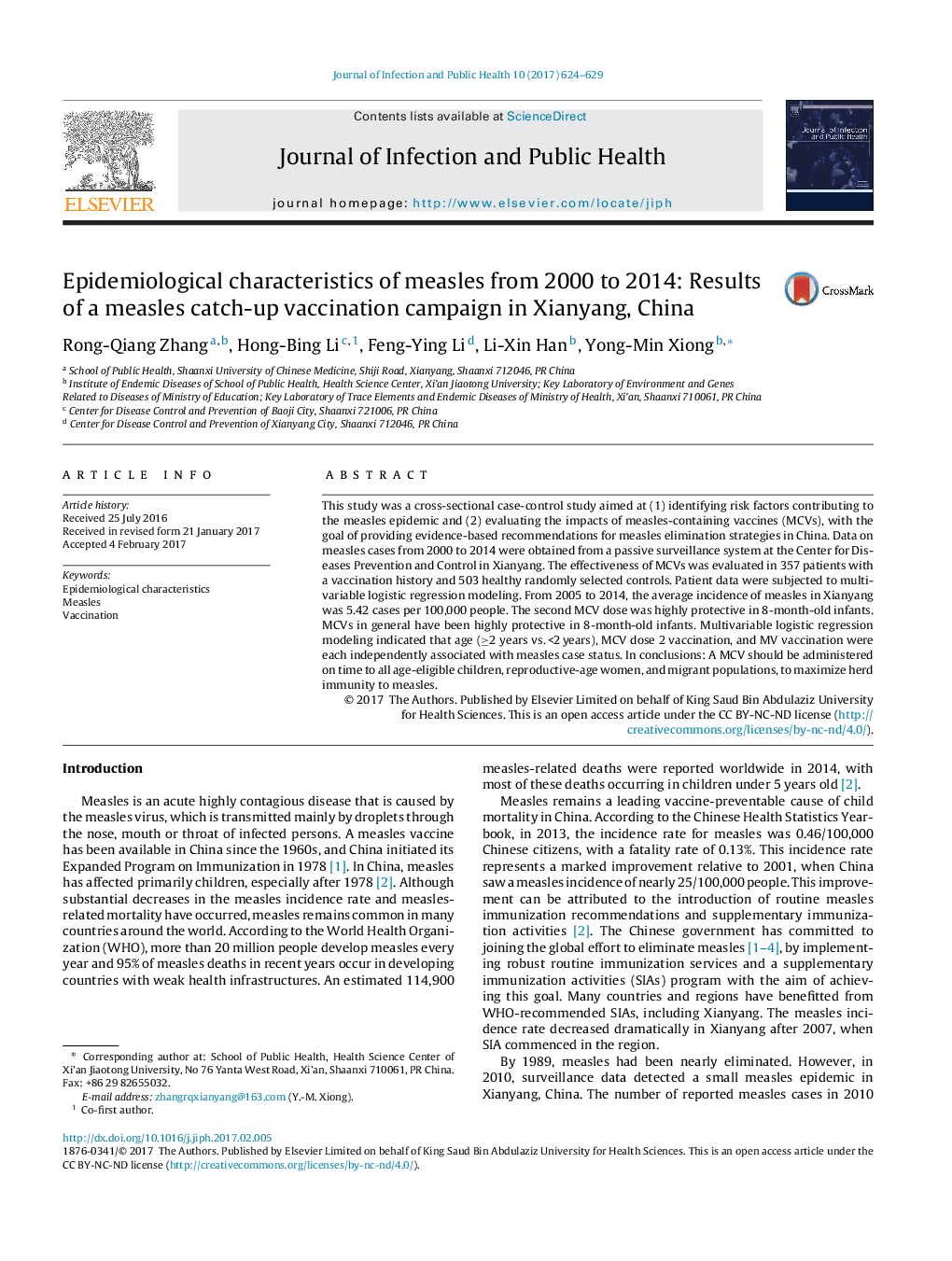| Article ID | Journal | Published Year | Pages | File Type |
|---|---|---|---|---|
| 5672754 | Journal of Infection and Public Health | 2017 | 6 Pages |
This study was a cross-sectional case-control study aimed at (1) identifying risk factors contributing to the measles epidemic and (2) evaluating the impacts of measles-containing vaccines (MCVs), with the goal of providing evidence-based recommendations for measles elimination strategies in China. Data on measles cases from 2000 to 2014 were obtained from a passive surveillance system at the Center for Diseases Prevention and Control in Xianyang. The effectiveness of MCVs was evaluated in 357 patients with a vaccination history and 503 healthy randomly selected controls. Patient data were subjected to multivariable logistic regression modeling. From 2005 to 2014, the average incidence of measles in Xianyang was 5.42 cases per 100,000 people. The second MCV dose was highly protective in 8-month-old infants. MCVs in general have been highly protective in 8-month-old infants. Multivariable logistic regression modeling indicated that age (â¥2 years vs.â<2 years), MCV dose 2 vaccination, and MV vaccination were each independently associated with measles case status. In conclusions: A MCV should be administered on time to all age-eligible children, reproductive-age women, and migrant populations, to maximize herd immunity to measles.
